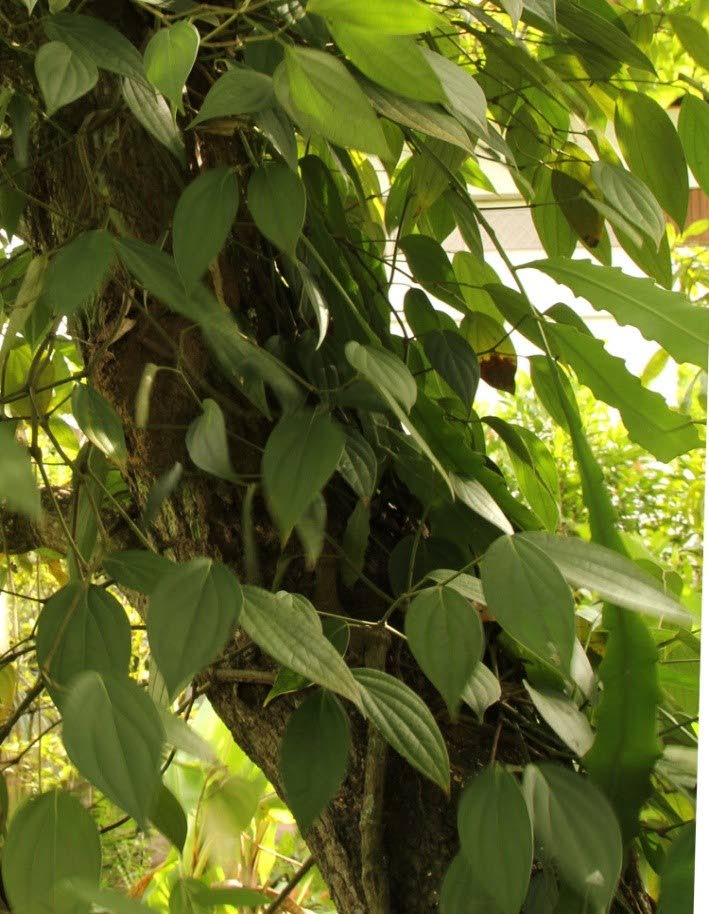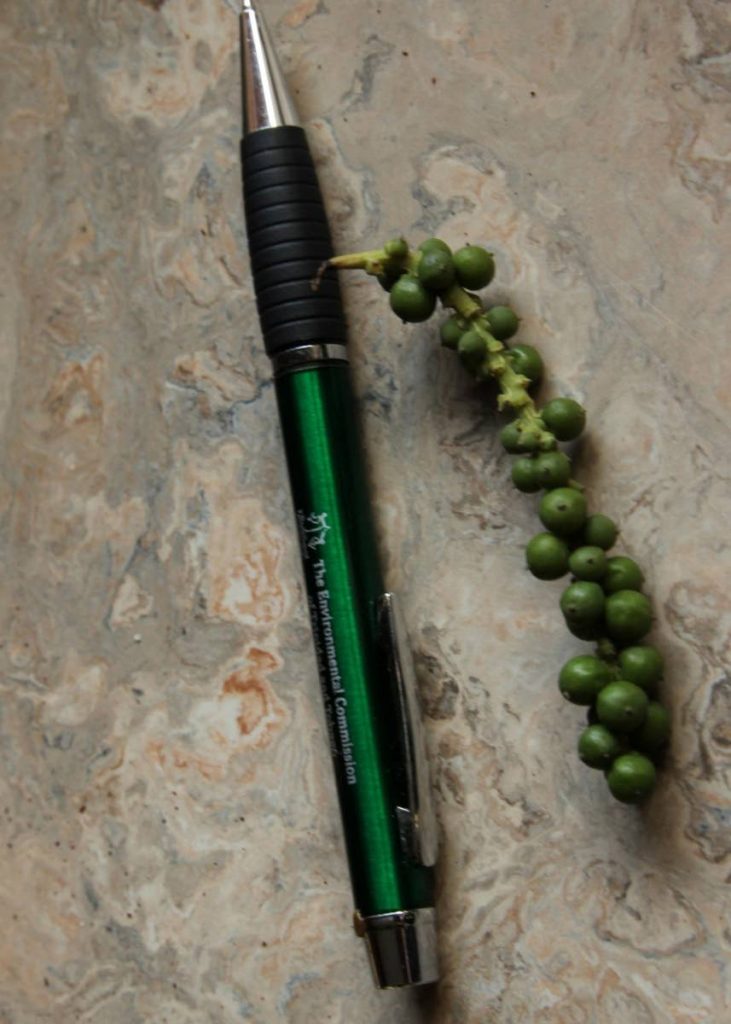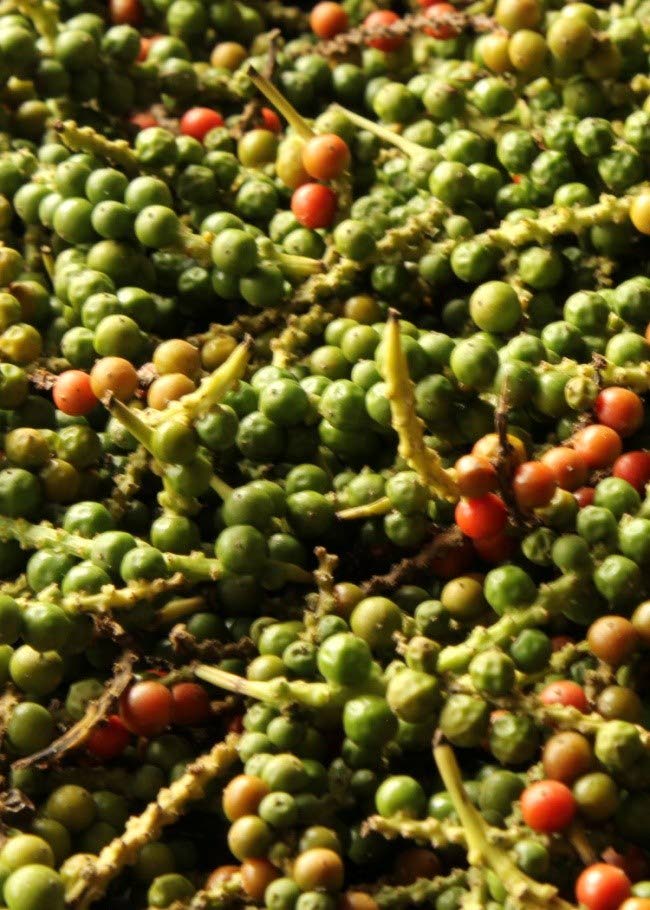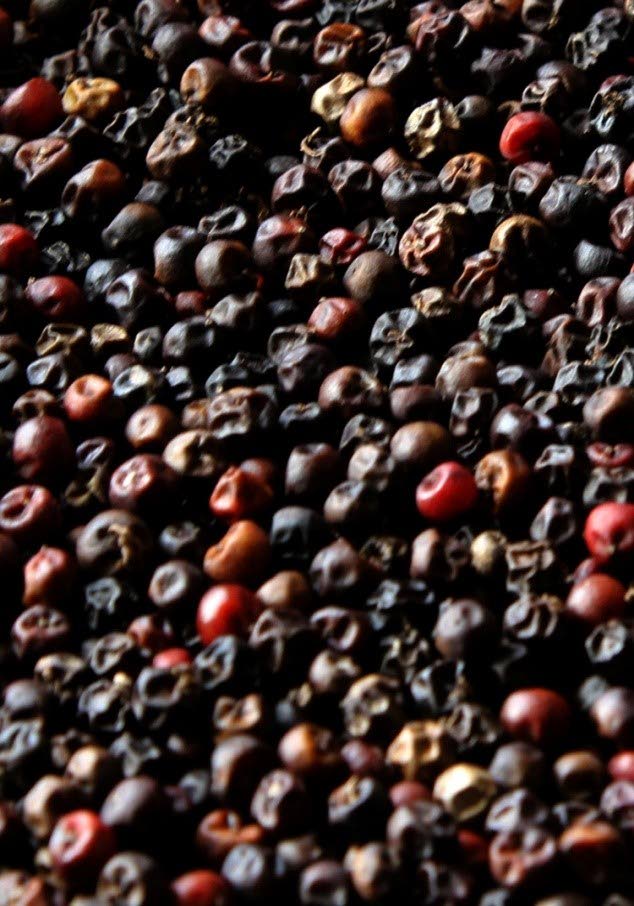Growing black pepper

SHARON LAURENT
Black pepper (Piper nigrum) is the fruit of a vine easily grown in Trinidad and Tobago.
Years ago, I was given a rooted cutting by the former director of Centeno, Sam Bharath. The vine has survived ever since. This spice originated in southern India and is used in nearly every kitchen worldwide.
The black pepper vine flourishes in humid tropical weather in areas where the temperature does not drop below 15 °C. The vines should be planted in a well-drained compost and do well in filtered sunlight. For the home gardener a half a drum filled with compost placed under a Julie mango tree is a good location. Vines can also be grown on an arbor but must be shaded. Fair warning, one of the biggest problems with black pepper vines is the similarity of the leaf to bird vine, which encourages anyone with a weed whacker to attack them if they are planted directly in the ground.

Planting material is obtained either by rooting cuttings or by growing seed. The majority of plants are produced from cutting as seed growth is slow. New plants should be planted out at the beginning of rainy season and if they are well managed may bear fruit by December.

Flowering begins in July and August with the appearance of tiny white flowers on short spikes along the vine. Soon tiny green balls appear on the spikes, these are the pepper corns. There may be anywhere from three to 40 on a spike. They continue to increase in size until mid-December when they begin to turn red. The second problem with black pepper cultivation will now appear, hungry birds love red berries and will steal your pepper. The appearance of red pepper corns is a sign you should pick all the peppers. Usually the whole spike is picked and allowed to sit for 24 hours, then the pepper corns are stripped off the spike. There will be a mixture of green and red pepper corns. The weight of the pepper corns should now be recorded.

If not properly dried the pepper corns will quickly begin to grow moulds and are no longer useable. The drying process converts the harvested corns to black pepper. After weighing peppercorns should be rinsed with cold water to remove debris and spread on clean metal trays. They can be sun dried or dried in an oven at about 200 °F (93 °C). Finished pepper corns should not have more than 11 per cent moisture content. An example is that if you have one kilo of green pepper corns the final dried weight should be 350 grammes. These dry corns can be further processed by grinding to make black pepper or by removing the black coat to make white pepper. Green pepper corns can be also be preserved in a salt and vinegar brine as soon as picked. Dried pepper should be stored whole and ground when you are ready to use it to benefit from optimum flavour.
Pepper plants have few pests and diseases but care should be taken to ensure the roots are not waterlogged. Water logging encourages soil fungi to attack the vine and die back can result.
For further information contact the Eastern Horticultural Club at 357-5033, 764-9125 or 720-2698 or easternhorticulturalclub@hotmail.com. The club meets on the first Saturday of every month (except public holidays) at 3 pm at Moreton Hall, Aramalaya
Presbyterian Church, Cochrane Street, Tunapuna.


Comments
"Growing black pepper"